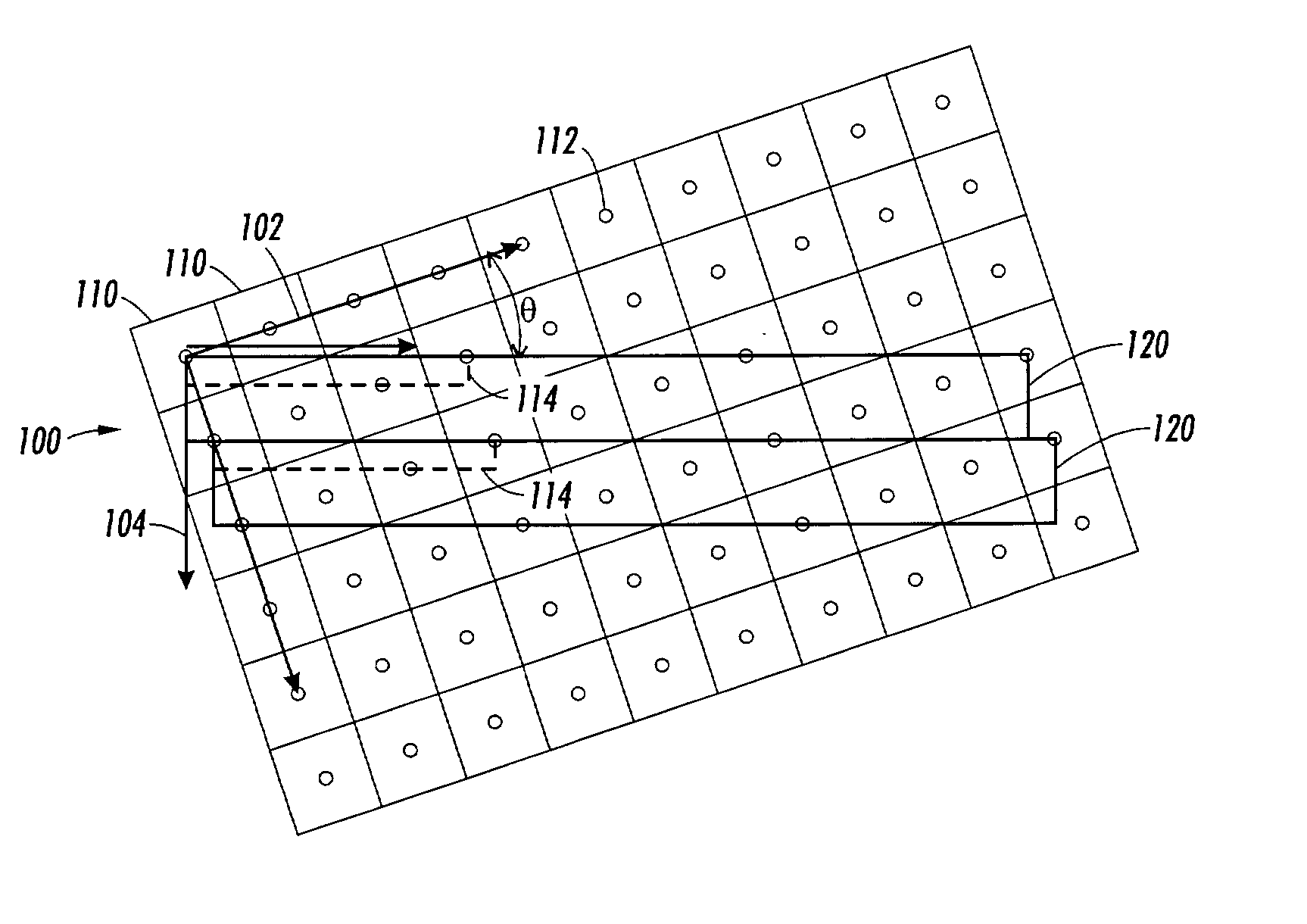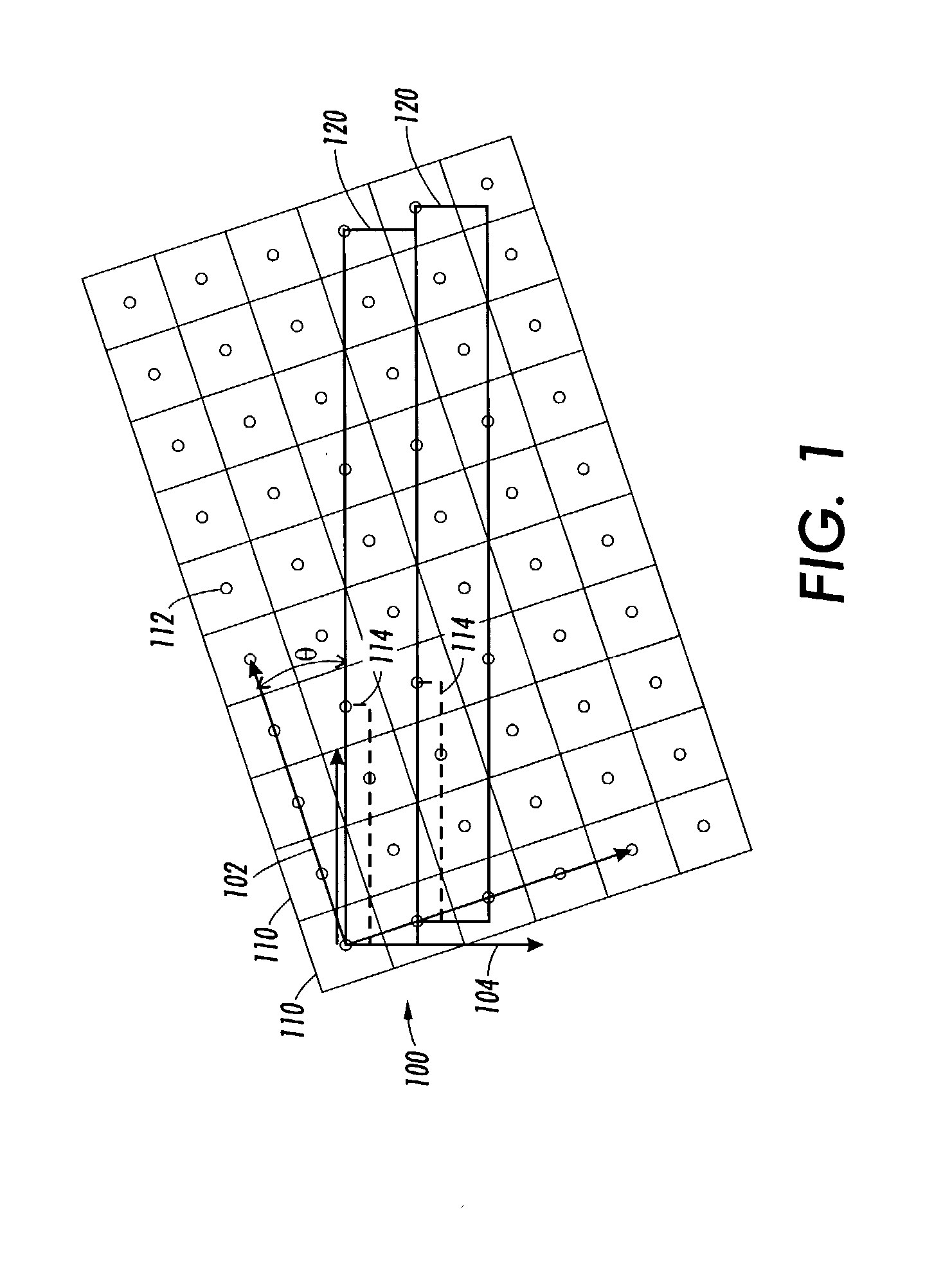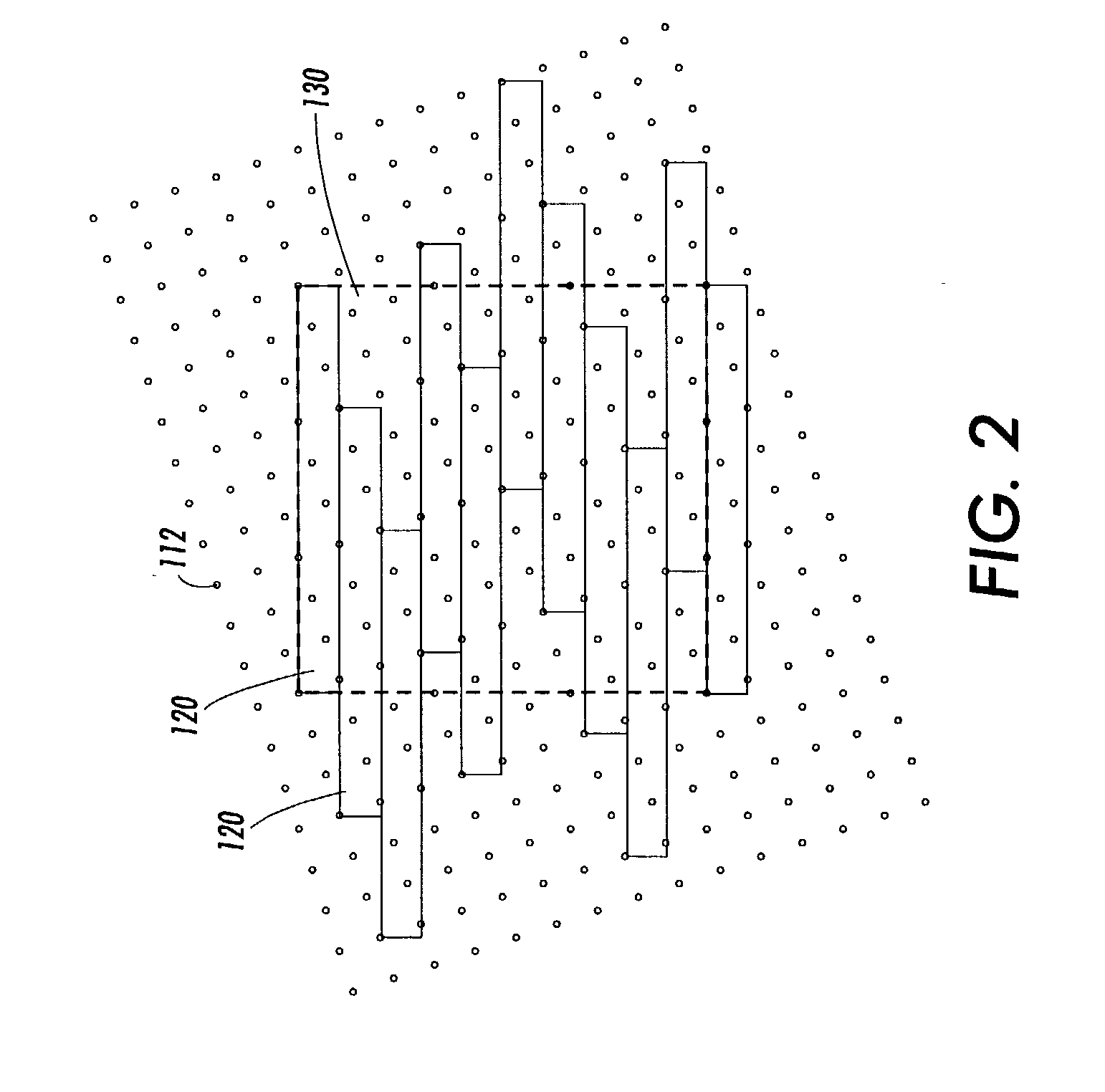Systems and methods for designing zero-shift supercell halftone screens
a technology of supercells and design tools, applied in the direction of electrographic processes, instruments, screening processes, etc., can solve the problems of inherently inefficient process of designing halftone screens using square zero-shift supercells, postscript hafltoning implementations have difficulty using arbitrary holladay dots, and above-outlined conventional design tools were not designed with the requirements of square zero-shift supercells in mind,
- Summary
- Abstract
- Description
- Claims
- Application Information
AI Technical Summary
Problems solved by technology
Method used
Image
Examples
Embodiment Construction
[0038] Conventional square zero-shift supercell halftoning schemes require at least a search for all possible sizes of the zero-shift supercell to locate a square zero-shift supercell that is aligned with the centers of an integer number of halftone dots on each edge of the square zero-shift supercell. It should be appreciated that such a search results in a set of candidate square zero-shift supercells. A compromise is effected between the angle of the candidate square zero-shift supercell, the frequency spacing of the square zero-shift supercell, and the resolution of the printer on which the resulting halftone screen will be used. These factors result in conventional square zero-shift supercells having non-ideal angles and / or non-ideal square zero-shift supercell frequencies.
[0039] This invention provides systems and methods for designing a halftone screen having a square zero-shift supercell. In particular, in various exemplary embodiments, the systems and methods of this invent...
PUM
| Property | Measurement | Unit |
|---|---|---|
| angle | aaaaa | aaaaa |
| angle | aaaaa | aaaaa |
| length | aaaaa | aaaaa |
Abstract
Description
Claims
Application Information
 Login to View More
Login to View More - R&D
- Intellectual Property
- Life Sciences
- Materials
- Tech Scout
- Unparalleled Data Quality
- Higher Quality Content
- 60% Fewer Hallucinations
Browse by: Latest US Patents, China's latest patents, Technical Efficacy Thesaurus, Application Domain, Technology Topic, Popular Technical Reports.
© 2025 PatSnap. All rights reserved.Legal|Privacy policy|Modern Slavery Act Transparency Statement|Sitemap|About US| Contact US: help@patsnap.com



